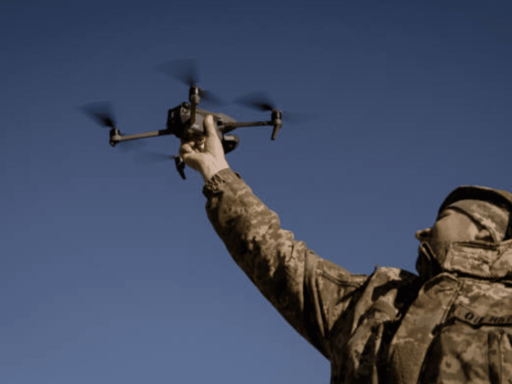The rise and rise of global drone warfare has severe health implications for combatants and civilians alike. according to leading medical journal, the Lancet.
Since 9/11 drones have become ubiquitous on the battlefield. Both states and non-state groups are using them. Their capabilities have progressed rapidly, but the law hasn’t caught up.
In a new report, the Lancet warned drones have “transformed conflict”:
And as technology develops further—including autonomous unmanned weapon systems—implications for health and safety of both military personnel and civilians are grave.
The report comes as the US announced it would buy a million drones in the next 2-3 years. In recent weeks the British military have trialed new Unmanned Aerial Vehicles (UAV) in Kenya. And recently, intensive Royal Navy testing of maritime drones took place off Scotland.
Drone warfare
The Ukraine war has supercharged drone warfare. According to the Lancet:
Russia makes an average of 5400 drone attacks per month against Ukraine; during so-called mass attacks, 400–600 drones can be launched in a single day.
Ukrainian leader Volodymyr Zelenskyy has ambitions for mass drone warfare. With US arms firms turning a tidy profit…
The Lancet warns that “an arms race is underway”:
…with changes to tactics and technology prompting the development of ever more sophisticated jamming systems and counter measures.
As well as making recovering the injured from the battlefield much harder, drone have been used to target healthcare facilities:
Hospitals, ambulances, and paramedics are picked out with pinpoint accuracy; a recent report found that since drones were first used against health-care facilities in Syria in 2016, the number of attacks globally—including in Gaza—has risen rapidly.
Mental illness from living under drones
There are physical as well as mental impacts, as we have seen in Gaza and elsewhere.
The presence of a drone or multiple drones flying overhead produces anxiety in those below who are unable to discern whether they are merely under surveillance or in imminent danger of attack.
Civilian populations affected report “anticipatory anxiety, signs of burn-out, headaches, and features of post-traumatic stress disorder (PTSD).” While drone pilots, due to long exposure to violence and death, suffer from “adjustment disorders, depression, and PTSD”:
…but there is still much that is uncertain or poorly studied.
Poor things.
The Lancet warned that the new paradigm carried the risk of new illnesses and injuries:
New modes and means of warfare have long impacted patterns of morbidity and mortality, from shell shock and combat fatigue, to Gulf War Syndrome, driving changes in clinical care, prompting research, and shaping public attitudes to conflict.
As we enter a new era of combat, much greater scientific, political, and public scrutiny is needed about the neglected physical and psychological effects of drone warfare.
Imperial boomerang
Clearly the dangers of drones have so far been felt mostly by those in the global south. UAV’s have became a signature weapon in the War on Terror.
But the same technology is making its way back to Europe and the US. Ukraine is the obvious example. But just this week drones were used against a Belgian airbase which houses US nukes.
Domestic use is also multiplying. Gaza-tested Skydio drones are now being used by over 800 US law enforcement agencies.
As the Canary reported:
The firm’s drones were [used] by police and security services to spy on the recent massive ‘No Kings’ protests against Trump’s moves to become a dictator.
The drones have “also been used by Yale University to spy on students participating in anti-genocide protest camps and, to a massive extent of more than 20,000 flights a year, by New York City police”:
Trump’s fascist ‘ICE’ militia and Border Force are also using Skydio drones to track and pursue targets.
After over two decades of pressure-testing in imperial policing operations, drone warfare has come home to roost. And with authoritarianism on the rise across Europe and the West, it behoves us all to start paying attention to it.
Featured image via the Canary
By Joe Glenton
From Canary via this RSS feed


